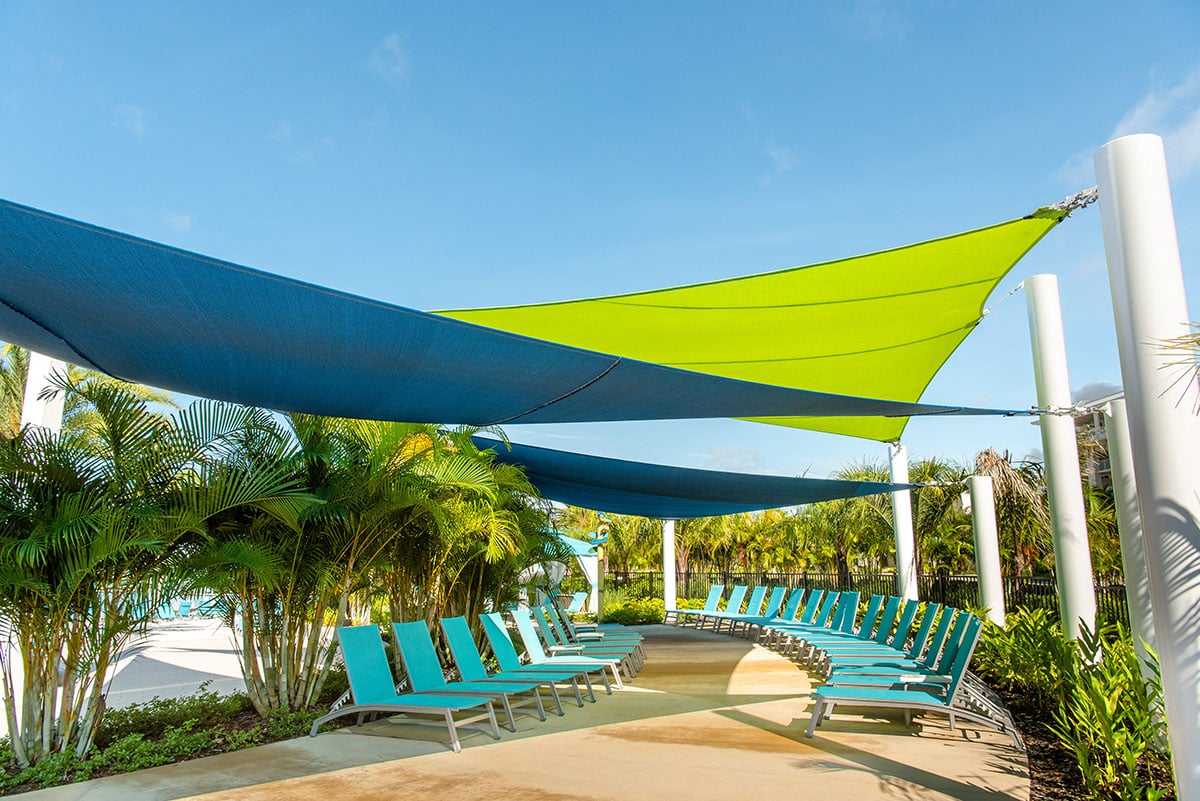Sail Shade Structures
Sail shades provide unique sun protection and can shade spaces large and small. Besides the architectural look, the design of sail shade structures is very practical as they can be used in places that have irregular or specific locations for column placement.
3 Reasons to Purchase a Commercial Sail Shade for Your Space
If these reasons solve your biggest shade pain points, then a sail style shade may just be right for your outdoor space.
You’re Shading an Oddly Shaped Space
If you’re shading an oddly shaped area, like over a large swimming pool, a sail shade may be a good choice. You have the flexibility to place the columns where you have free space and then custom make the sail’s fabric to fit your space. This also works if the columns need to be placed in specific areas at your site.
You’re Looking for an Architectural Piece
Commercial sail shades are visually pleasing just as they are. However, if you’re looking to create a show stopping shade, sails are for you. We’ve worked with landscape architects to bring their sketches to life. Your imagination is the limitation when it comes to sail shades.
You’re Looking for Lots of Color
By purchasing a sail shade with multiples sails, you can mix and match fabric colors to create a colorful masterpiece. Sail shades are great for reinforcing your brand’s colors.


Practical for All Commercial Markets
The appealing aesthetic design and flexibility to create different configurations make these sail shades applicable to many places:
- Country clubs
- City parks
- Town squares
- Outdoor dining spaces
- Pools
- Playgrounds
- Outdoor event spaces
- Apartment complexes
We provide shade sails in commercial, outdoor settings. Our shade sails are not suitable for home or residential use.
Interested in a sail shade? Let's Get Started On Your Project
Fill out the form below and we'll be in touch about your commercial shade project.